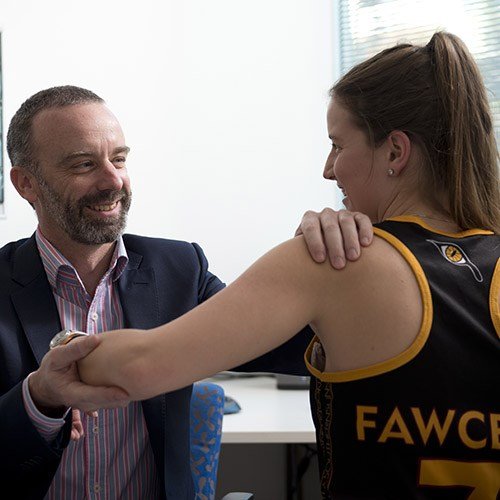SLAP Tear Repair
SLAP is an acronym for superior, labrum, anterior, and posterior – A SLAP tear is an injury to the top part of the labrum where the biceps tendon attaches. The labrum is the ring of cartilage which reinforces the ball-and-socket shoulder joint where the glenoid (cup) and the humerus (ball) meet.

In younger patients, SLAP biceps injuries are generally caused by trauma or repetitive shoulder use. Sportsmen and women – particularly throwing athletes, weightlifters and gymnasts – are more susceptible to SLAP injuries.
As SLAP injuries are also part of the normal wear-and-tear of ageing, they are not uncommon among patients over 40.
A SLAP bicep tear will likely start with a deep aching pain. Other symptoms may include:
· Clicking, catching, or popping sensations
· Limited use of the shoulder
· Feelings of instability or weakness
· Pain when carrying heavy items or moving the arm
To diagnose a SLAP tear your doctor will perform a physical examination and ask questions about your medical and lifestyle history. This helps exclude other factors that can cause discomfort, including your neck, head, and back.
If your doctor suspects a SLAP tear, they may request imaging tests to confirm a diagnosis. An MRI scan may be used to examine the tissue inside the shoulder, and an x-ray or CT scan may be requested to confirm bone damage.
Minor SLAP tears are treated non-surgically. Treatments begin with pain and anti-inflammatory medication, often followed by physiotherapy to restore function and strength to the shoulder.
Surgery might be an option if discomfort cannot be managed through non-surgical approaches. Patients who need to lift and work with their shoulders – such as athletes, manual labourers, or younger patients – may opt for surgery to speed up the recovery time.
Orthopaedics SA surgeons offer SLAP biceps surgery using a minimally-invasive arthroscopic approach. The surgeon inserts a tiny camera (arthroscope) through an incision in the shoulder, allowing them to confirm a diagnosis and make appropriate surgical decisions without the need for open surgery.
The type and extent of injury will dictate the surgeon’s course of action. In many cases, this involves removing the damaged section of the labrum or reattaching a torn section with sutures. Repairing the biceps tendon and/or reattaching the biceps tendon and removing the damaged section of the tendon are two ways SLAP biceps tears can be managed surgically.
Book an appointment with our orthopaedic specialists
Book an appointment